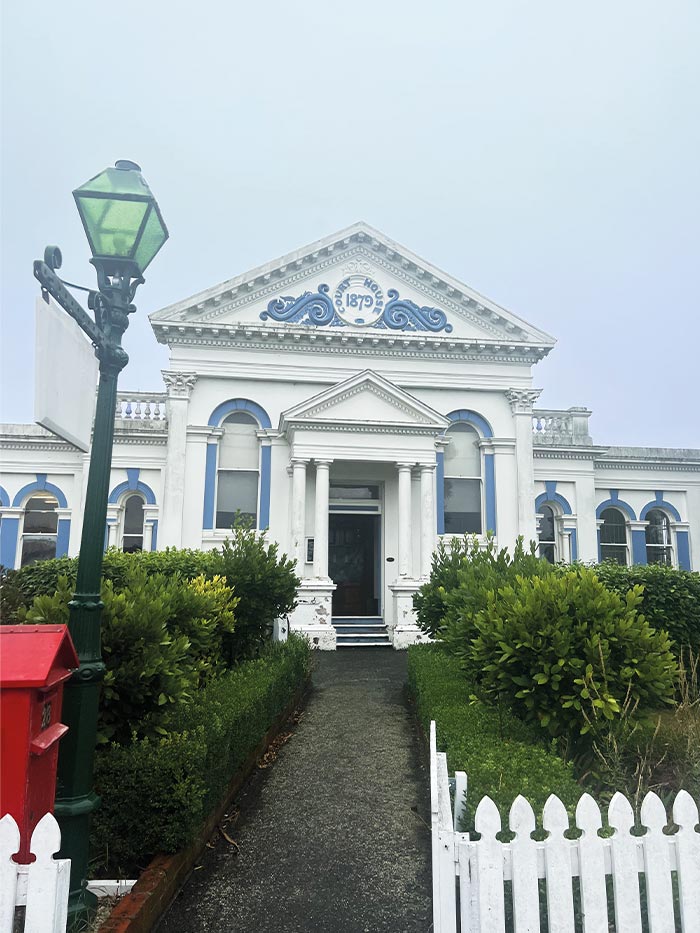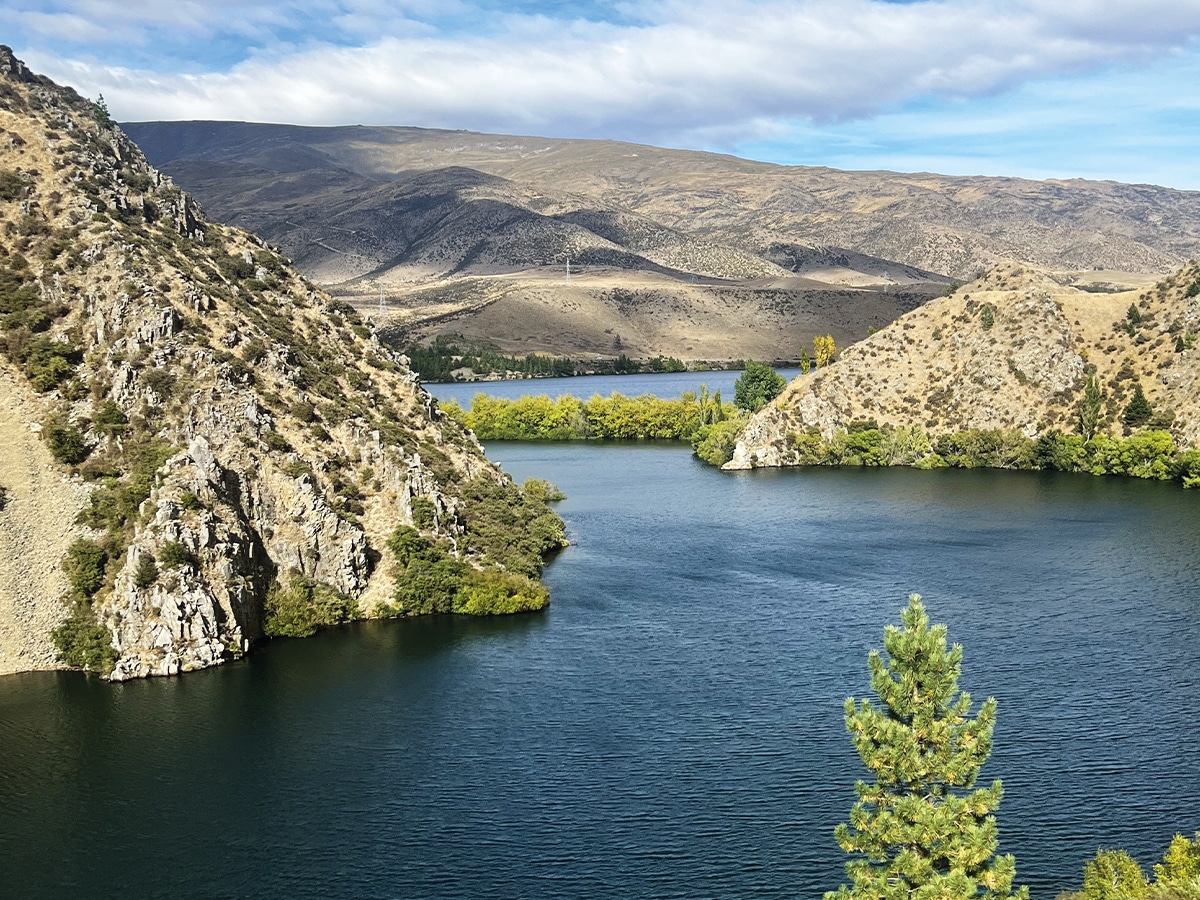Shannon Williams headed to the Waimate District with her walking shoes on, and discovered what may just be her favourite small town in New Zealand.
If someone asked me what my favourite travel activity was, I’d just have to show them my collection of ruined sneakers, holey socks and mismatched tan lines for them to know it was getting out on the trail, one foot in front of the other. And the great thing about this beautiful country of ours, is that there are just so many different landscapes to explore, without having to venture too far.
Waimate in the South Island is a wanderer’s wonderland; from uphill climbs and forest strolls to lakeside meanderings, Waimate is my new walking crush.
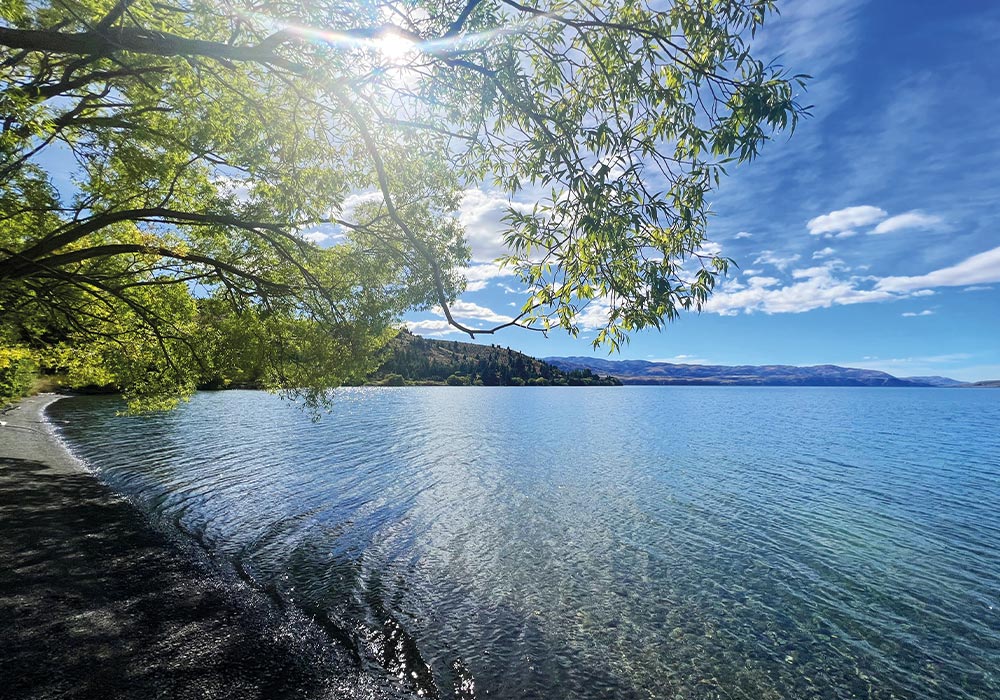
A postcard for rural small town New Zealand, Waimate sits between Timaru and Oamuru. A two-hour drive from Dunedin or two hours, 45 minutes from Christchurch, the area was originally a seasonal hunting camp for Māori before European settlers arrived, when it became a sawmilling town. The majority of the town’s original Edwardian buildings are still standing, and a walk around Queen Street in the town centre will give you glimpses of the area’s charming history.
There are many walks a short drive from the town centre. About a 10-minute drive away is Gunns Bush, where a loop track follows a river valley through some gorgeous greenery. Moss grows underfoot, making the first part of the walk a magic green carpet, with more moss hanging from the trees above, creating a lush fairyland. There are many large kōtukutuku, the largest fuchsia in the world, as well as many old totara. The loop takes just over an hour and half, and dogs are allowed too.
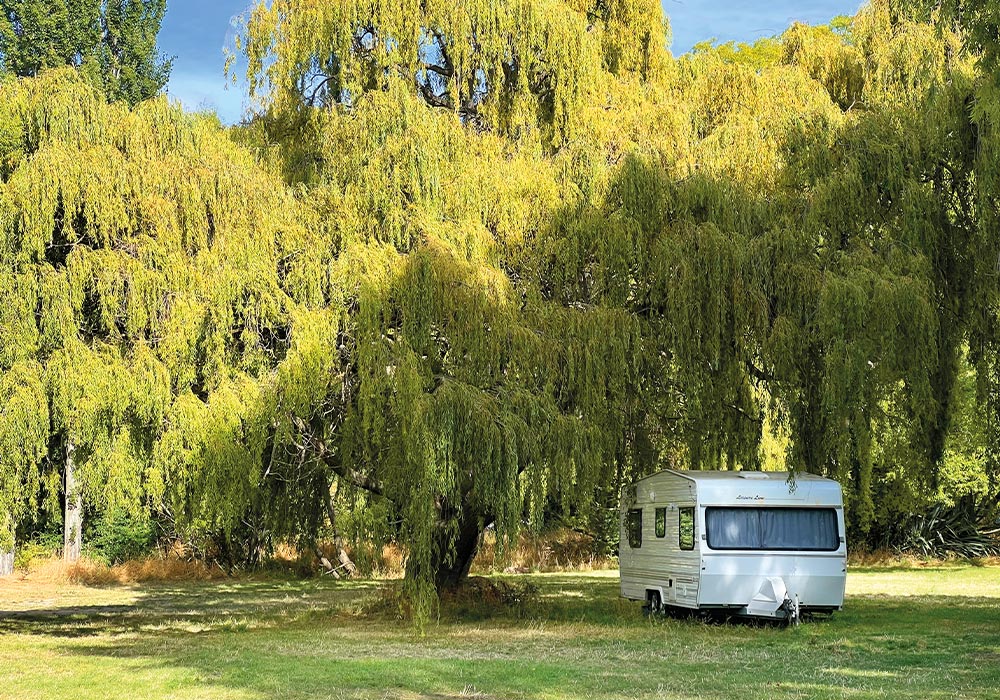
Also close to town is Kelceys Bush, which has a couple of short walk options through some beautiful bush. Sanders Falls takes about 20 minutes, or the Intake Track takes around 40 minutes, depending on your speed. Dogs on leads are welcome. The tracks follow a stream, so be prepared for some wet feet. There’s some great spots to picnic here as well.
Also close to town is the famous White Horse Lookout. The lookout is a great spot for walking or mountain biking, or just to take in the sights of the entire district with views out to the Pacific Ocean and Southern Alps. Waimate’s agricultural past is celebrated by the big 18.29m-high White Horse monument on top of the hill at Centrewood Park. Built in 1968, the white horse was built by retired farmer Norman Hayman as a tribute to the significant role horses played in the town’s farming history.
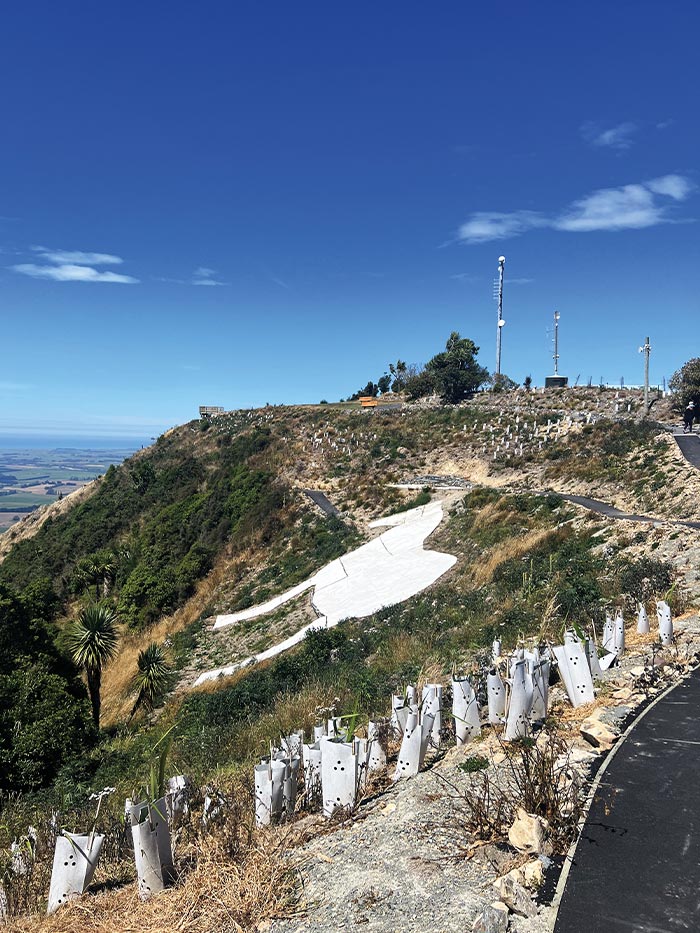
There are two options for walking, and both require a good level of fitness as you’ll be heading uphill. The White Horse Walkway is a 4.3km return track starting at the car park at the top of Point Bush Road, up grassy slopes that joins an old logging track, through remnants of Totara forest. The track crosses over hilltop grassland to reach the White Horse Monument. If you’re after a longer walk, Studholmes Bush walking track is a three-four hour return trip. It’s a long, steep climb at the start, rewarded by amazing views at the top. These are both shared-use tracks so keep an eye out for bikes, and other walkers and runners. Dogs are also welcome.
A short drive out of town will take you to what was one of my favourite walks in the district – or maybe one of my favourites anywhere – Deep Stream Track. To get there, turn off State Highway 83 at Aviemore Dam onto Te Akatarawa Road in Waimate Lakes Area – the drive there is worth the sights alone. The 2km (one way) track goes along steep faces within a flooded canyon, with some steps and narrow paths in some parts. Don’t worry too much about the steps; you’ll be stopping constantly along the way to take photos so you can catch your breath. There are native plants along the track, including two rare native brooms – Carmichaelia curta and Carmichaelia kirkii. The track is well defined and easy to follow to the stream delta, where it comes to an end amongst the shady willows. A table is available along the way for a lakeside picnic. Keep the pooch at home for this one.
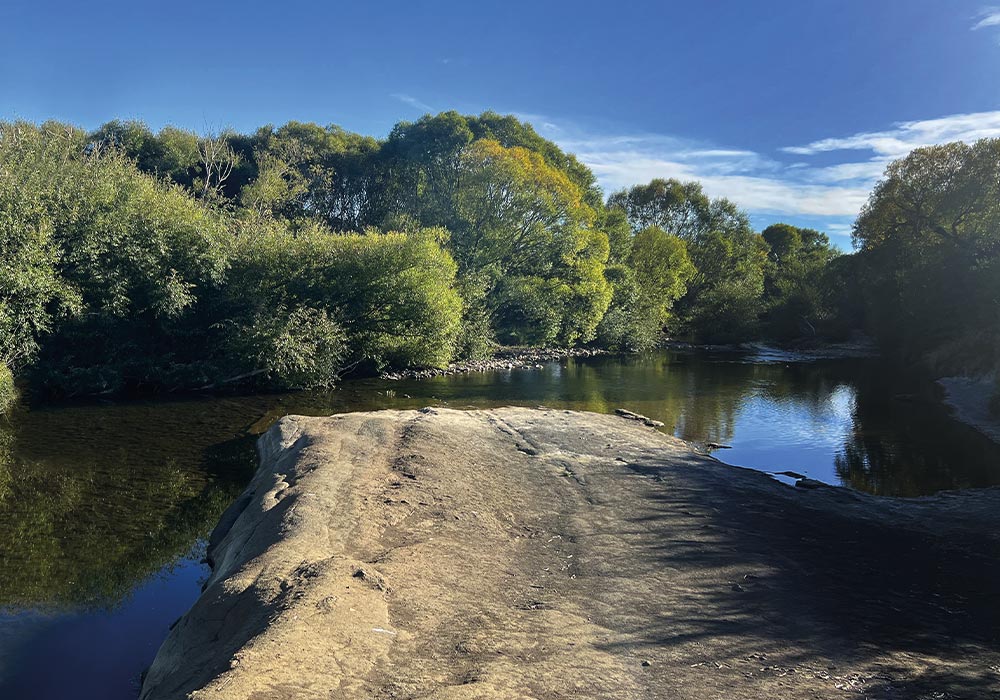
Camping paradise
You could easily spend weeks in Waimate exploring all the different walking and bike tracks, swimming holes and fishing spots around the district – and the great thing is there are so many different camping spots to choose from. There are two types of campers in this world – those who like to set up shop and get settled into that one perfect spot, and those who like to go somewhere different each day to see the most of the destination. I’m firmly in the latter – I like to change it up from being in the middle of nowhere surrounded by bush, having an ocean view, to being parked up next to a river, and then the occasional night or two in a paid campground to do some laundry and get clean. Waimate offers all of these options in spades – there’s literally something for everyone, and chances are, you can get some pretty neat spots all to yourself.
Waimate is freedom camping friendly, and there are great options scattered around the district. Gunns Bush is a pretty spot, while Black Hole is great for swimming and Waihao Box offers some good fishing.
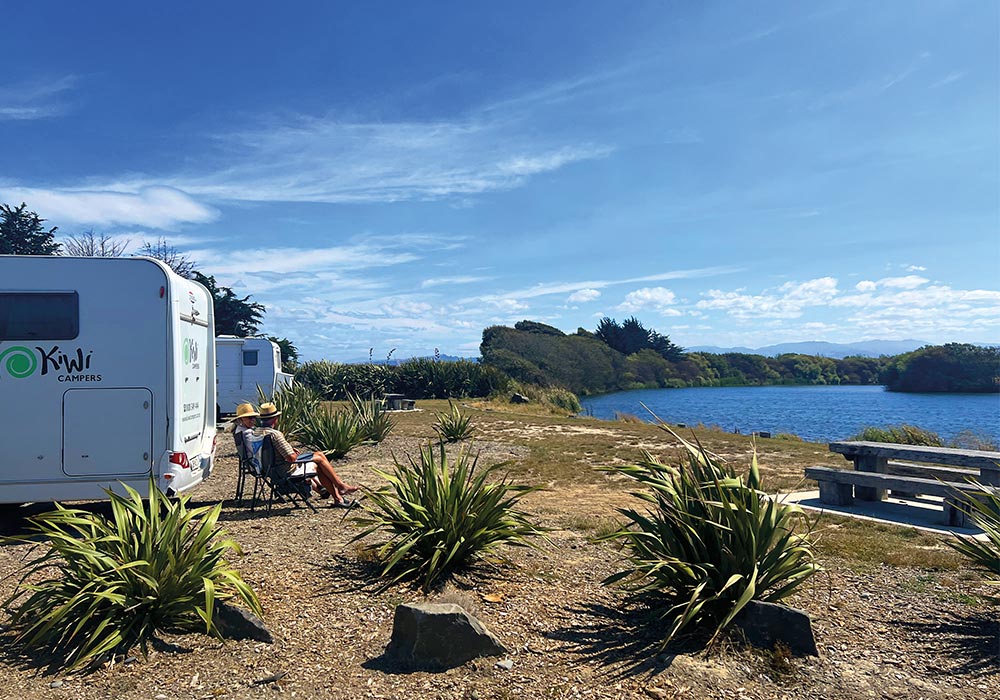
Just 2km from Waimate you’ll find Knottingley Park and Arboretum, a hidden gem set over 36ha. The park couldn’t be any more peaceful, with old exotic trees creating a sense of privacy and tranquillity. You could easily think you’re out in the middle of nowhere, despite being so close to town. The campground offers powered and non powered sites, toilet and kitchen facilities, is pet friendly, has a playground for the kids as well as walking and biking tracks. Scattered throughout the park is a disc golf course.
Also in town is the Victoria Park Camping Ground, located in the corner of Victoria Park. The park has sites and cabins, which have their own bathroom and kitchen (a perfect retreat after a couple of days in a camper!). The park has beautiful gardens, trees and lawns, animal enclosures, a nine-hole disc golf course, cycling oval, picnic areas and playground.
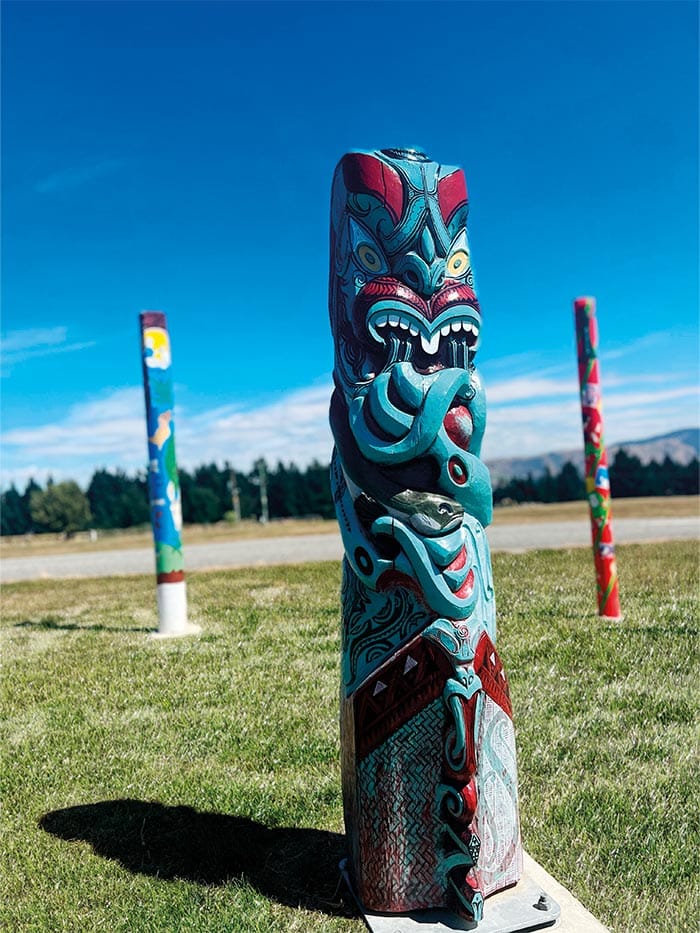
While the many camping options in town are great, you need to head out to the Waimate Lakes camping area for at least a couple of nights. Waimate District Council operates five large campsites here, which are open for the season from September to May. They are situated along the shores of Lakes Aviemore and Waitaki, with plenty of room to set up for days and even weeks; some campers settle in for the entire season. The campsites are ideal for those who enjoy being on the water, whether you’re boating, fishing, swimming or kayaking. Fisherman’s Bend Reserve, Briar’s Gully, Te Akatarawa Reserve, Waitangi Reserve and Waitangi East all offer tent, motorhome and caravan sites (without power), as well as boat ramps, with toilet facilities, dump stations and water taps. The 500-capacity Fisherman’s Bend Reserve is definitely the standout, located directly on the Waitaki River at the end of Te Akatarawa Road.
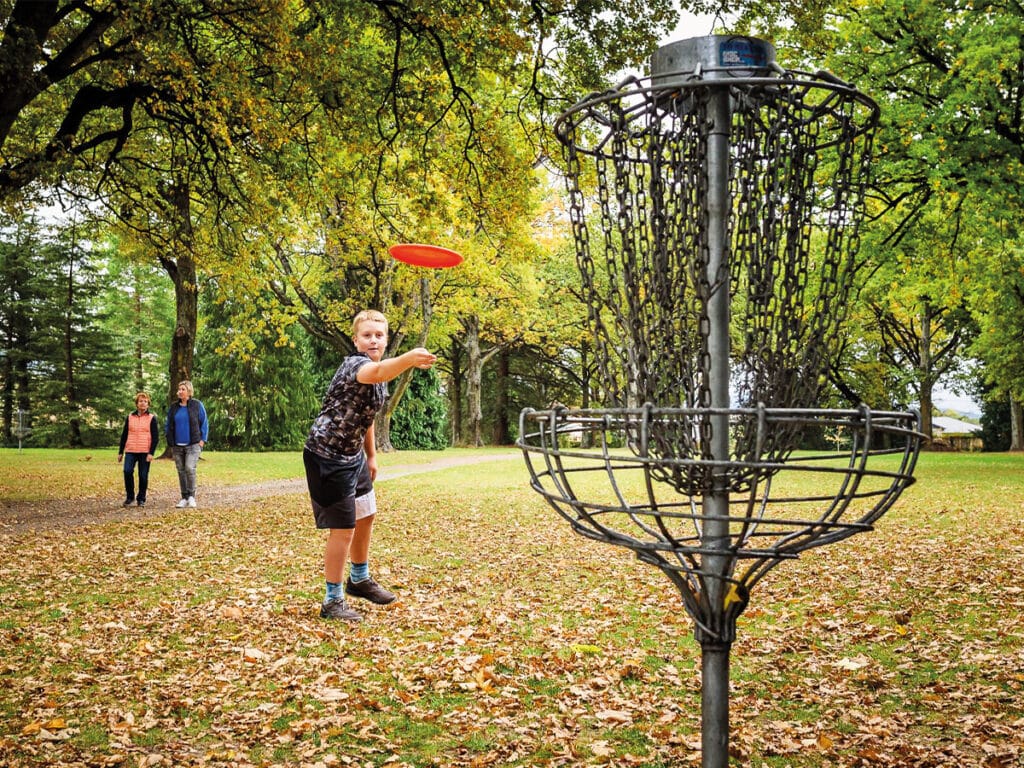
Great Gwen
I don’t quite know what I enjoyed more – feeding and petting the beautiful wallabies at the Wallaby Park, or chatting to their owner/rescuer/carer/mum Gwen.
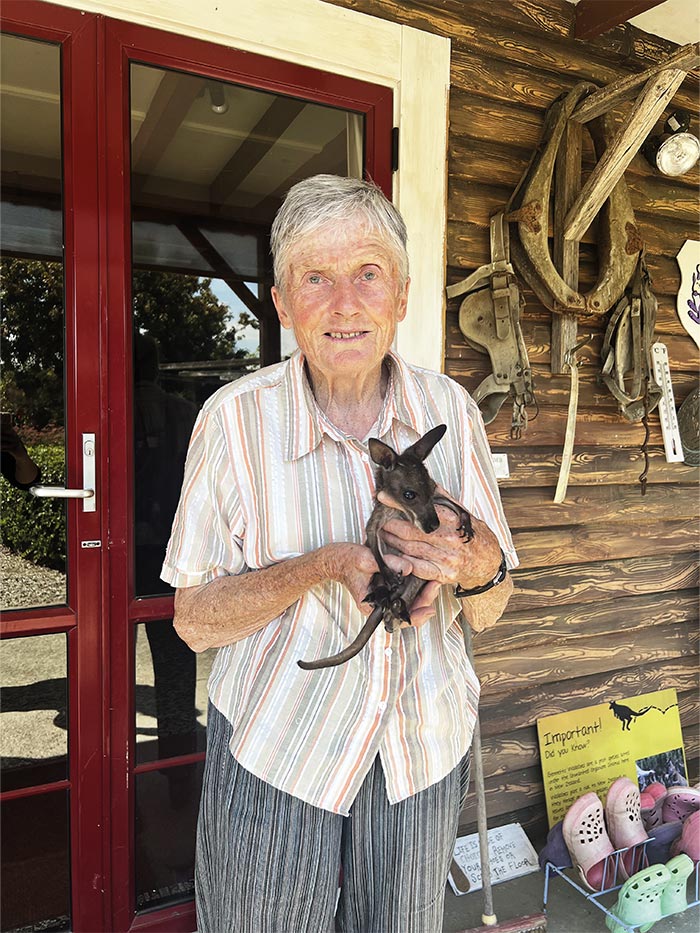
Gwen Dempster-Schouten, also known as ‘the wallaby lady’, has been hand- rearing orphaned young wallabies since 1977, when a hunter brought her her first orphaned baby wallaby to take care of. Gwen opened EnkleDooVery Korna to the paying public in October 1999. Visitors can wander at their leisure to view the wallabies in separate enclosures and have the opportunity to feed and photograph wallaby families and cuddle orphan baby wallabies when available. The wallabies are so friendly, they will literally come straight up to you and eat from your hands; it’s a very special experience. It’s a lot of hard work for Gwen – as well as showing people around the property, she rears the baby wallabies from young. They need to be kept warm, and fed every three hours night and day with a special milk mix. “To them, I’m Mum; to me, they’re my kids!” she says. Gwen’s passion for her animals is clear, and she’s got some great stories to tell too. Put aside an hour or two (more if you get chatting to Gwen!) to explore the park and feed the wallabies, and make sure you wear a hat as there’s no shade and it can get pretty hot.
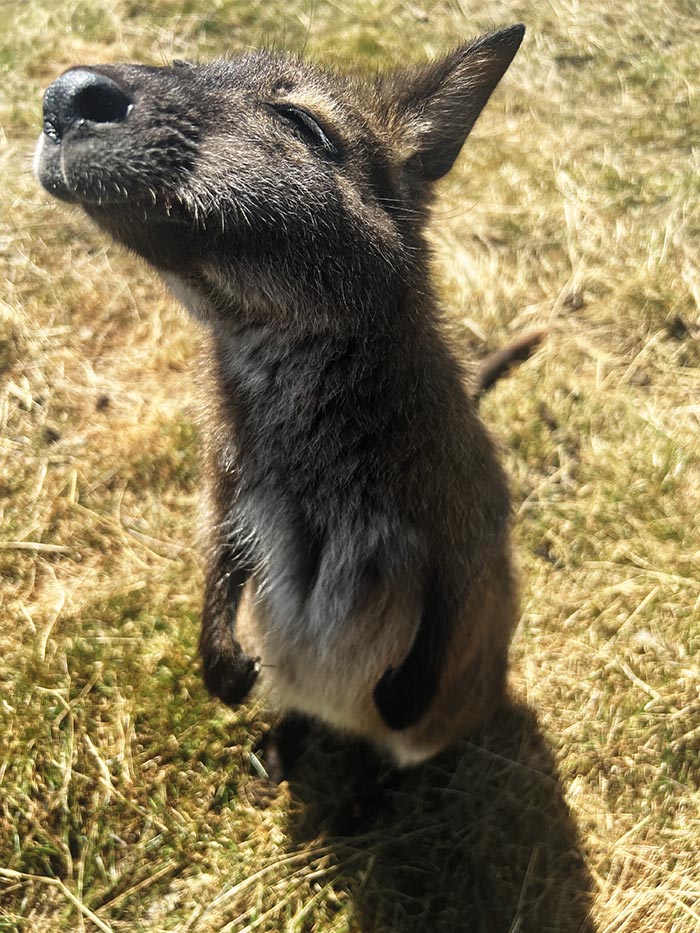
Time to eat
Hungry after all that walking? Don’t worry, there’s plenty on offer in Waimate, including pubs, takeaways, a supermarket, cafés and fine dining. Originally established in 1861, the Waimate Kitchen & Bar is located in a beautifully restored building and offers a great lunch and dinner menu. Try the banana blossom tacos or the vegan moussaka with charred aubergine. Waimate Bakery, located in another historic Waimate building, offers gourmet sandwiches and salads, pastries and sweets, and is the pick of the town for this coffee snob. At the Waimate turn-off on SH1 is Nosh Roadside Gourmet, offering freshly made cabinet food, great salads, and an amazing collection of sweet treats.
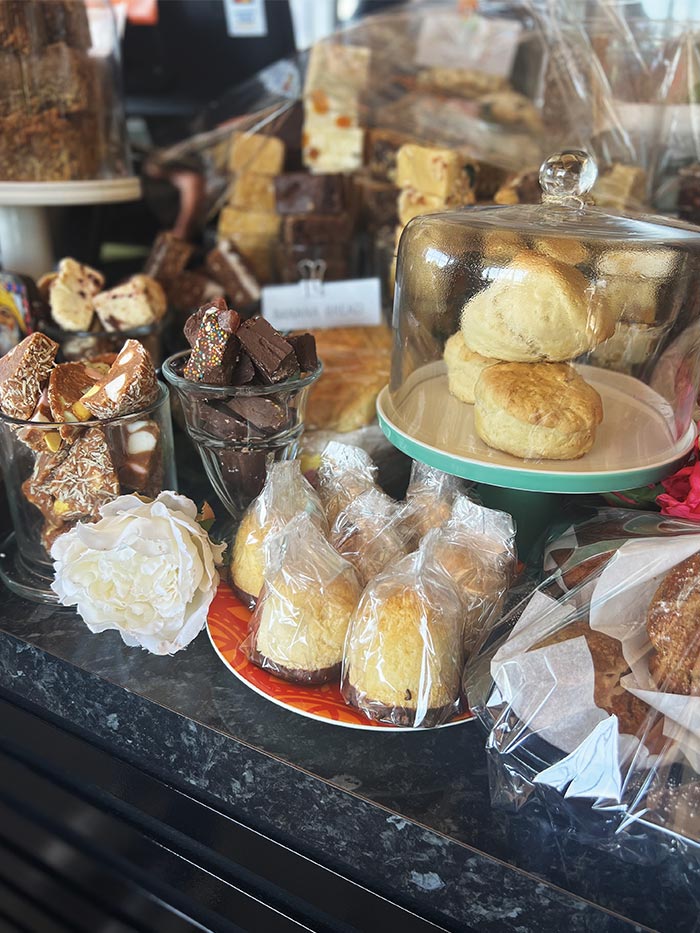
Murals and Museums
I took a break from all the walking and nature to check out what else was on offer in this charming little town. In the town centre, Queen Street is bustling with shops, many of which are in original Edwardian buildings, beautifully restored. There are some great second-hand shops, and you could get lost in the town’s antique and vintage stores, which are literally bursting with treasures. I still regret not picking up that vintage cat ornament for my collection. Instead, I bought a pair of rust-coloured Converse in perfect condition from Rewind, a specialist boutique clothing store full of quality, preloved labelled clothing and accessories. The Quirky Magpie is the place to go for homewares, jewellery, soaps and skin care, perfect if you’re in need of a gift. There’s also a weekly Waimate Community Market held in Seddon Square. If you’re heading out to the lakes or into the bush, check out Waimate Outdoors for fishing, hunting and pet supplies, as well as sporting goods including cycle sales and services, and TackleShop Leisure and Home for any fishing gear you may need.
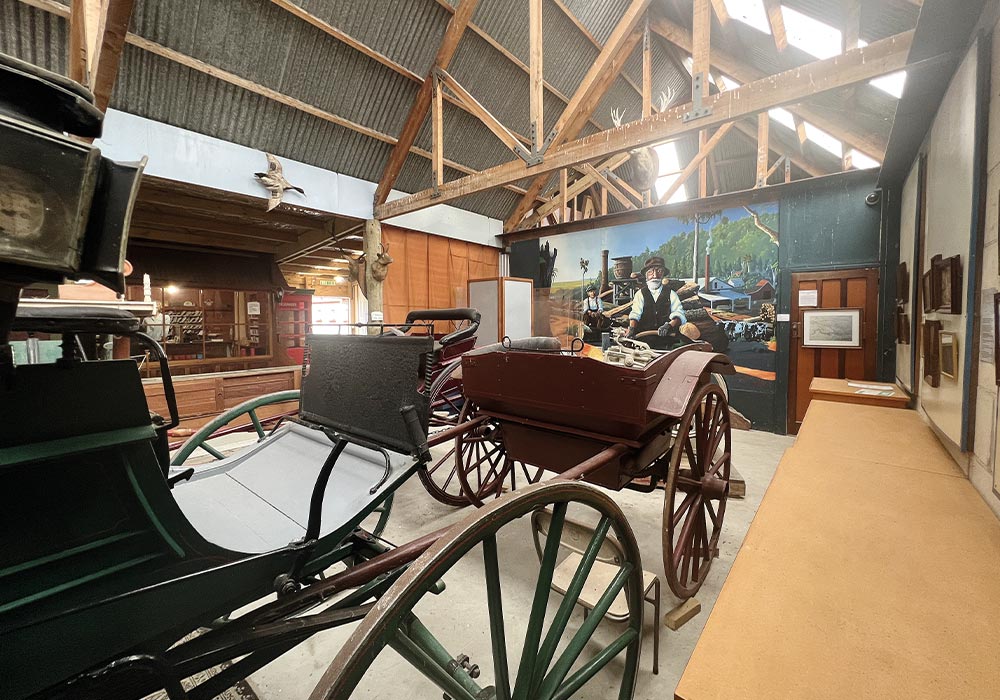
As you explore, you’ll notice several vibrant murals scattered around Waimate township. Created by local artist Bill Scott, the murals depict scenes from the past – the ANZAC mural at the Waimate Town and Country Club is stunning.
Waimate is also home to one of New Zealand’s largest pieces of street art, on the landmark Grain Silos. You’ll see them as soon as you drive into town. The 36m-high silos each depict a significant person from the district – there’s Chief Te Huruhuru and European settler Michael Studholme; there’s the famous son of Waimate – former prime minister, Norman Eric Kirk; then there’s Eric Batchelor, a WWII soldier who was twice awarded the Distinguished Conduct Medal for bravery; and the mural of Dr Margaret Cruickshank, the first woman GP in New Zealand.
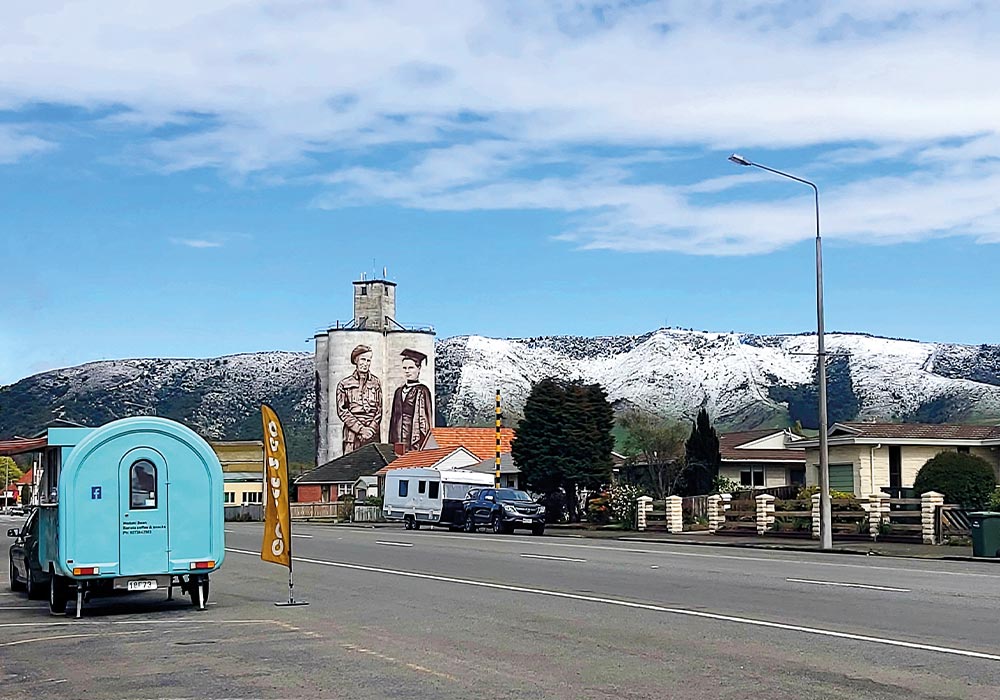
If art is your thing, check out the gallery at the Waimate Art Society, which showcases art from around the community. If you’re after some history, head along to the Waimate Museum and Archives. Located in the former courthouse, opened in 1879, the collections include fossils and moa bones, medical equipment from the old Waimate Hospital, horse-drawn machinery, and a room full of clocks. The buildings include the 1879 Courthouse, former police station, jail, stables, pioneer cottage, and a 1912 country school.
Ted’s bottle
A bottle of beer has remained unopened behind the bar of the Waihao Forks Hotel since World War II. The bottle was left there by Private Ted d’Auvergne when he set off for war from Waimate in January 1940. He told the publican he would drink it when he got back. Unfortunately, Ted was killed in action in Crete in 1941 and never made it back home.
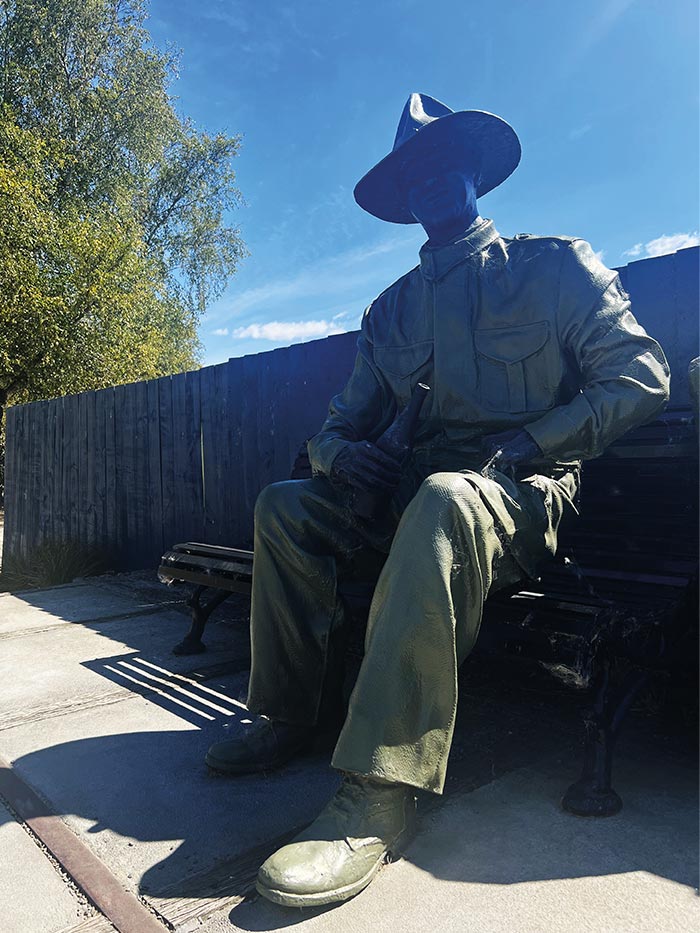
The beer bottle remains a unique memorial to the soldier, and a life-size sculpture of Ted now sits outside the hotel to honour all the rural soldiers who left small town New Zealand to war and never returned. Pop in for a drink or meal at the hotel and you can see the bottle for yourself, plus there’s an information board telling the full story of Ted and other war stories.
Summary
This may have been my first visit to Waimate, but it certainly won’t be my last. The district is a perfect example of why motorhoming is the perfect way to explore New Zealand – you’ll end up in spots that are pretty as a picture that you may have never heard of. And while you’re out there climbing hills and getting your feet wet, you may just end up finding wonderland.
